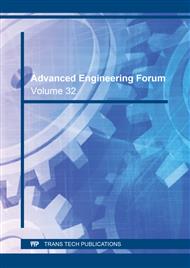p.1
p.15
p.27
p.41
p.53
p.63
p.75
Impact Mechanics of Football Helmet with Various Shell Liner Configurations
Abstract:
The structure of the skull reveals that the cranial is made up of a number of bones. These bones, except the temporomandibular joint, are joined by sutures. The adjacent bones are strongly united by a matrix of connective tissues consisting of bundles of strong collagenous fibres connecting periosteum to the bones. The little movement at the sutures contributes to the elasticity and compliance of the cranial. This composition serves as a shock absorber and distributes impact force evenly around the skull. Frequent head impacts by footballers cause concussion which leads to brain and neurological disorders such as; Traumatic Brain Injury (TBI), dementia, depression, and a loss of attention span. These disorders are primarily caused by shock waves following impact, which moves from the front to the back of the brain. As such, the effort is geared at reducing head injuries from concussion by optimising helmet design through shock absorption increase and stress amplification reduction during impact. In this paper, the suture structure is mimicked in the design of a football helmet. A fibre-reinforced composite liner is introduced in the shell of the helmet. The liner runs from the front to the back of the helmet and bisects the shell into two equal parts. Hyperelastic material model is employed in the modelling of the composite liner while the polycarbonate helmet shell is modelled as a nonlinear elastoplastic material. A finite element model based on realistic geometric features of a football helmet was carried out, and an explicit finite element code LS-DYNA® is employed to simulate dynamic responses at different impact velocities of the helmet. The simulation was repeated for various compositions of the composite liner. Impact loads are applied on one side of the helmet shell while the responses are taken on the other side of the shell body of the helmet. To establish the validity of the model, the liner, and the shell materials are made to be the same. The results revealed that the responses of the helmet during impact are the same when the two components are of the same material compared with when there is no liner on the helmet shell. It was also shown that the dynamic response curve of the helmet emanating from different impacting conditions is judged by the maximum principal stress, Von Mises stress, and acceleration monitored within the impact period. The helmet composition with a sinusoidal liner form on the shell absorbed more impact load than other liner configurations.
Info:
Periodical:
Pages:
27-39
Citation:
Online since:
April 2019
Authors:
Price:
Сopyright:
© 2019 Trans Tech Publications Ltd. All Rights Reserved
Share:
Citation:


